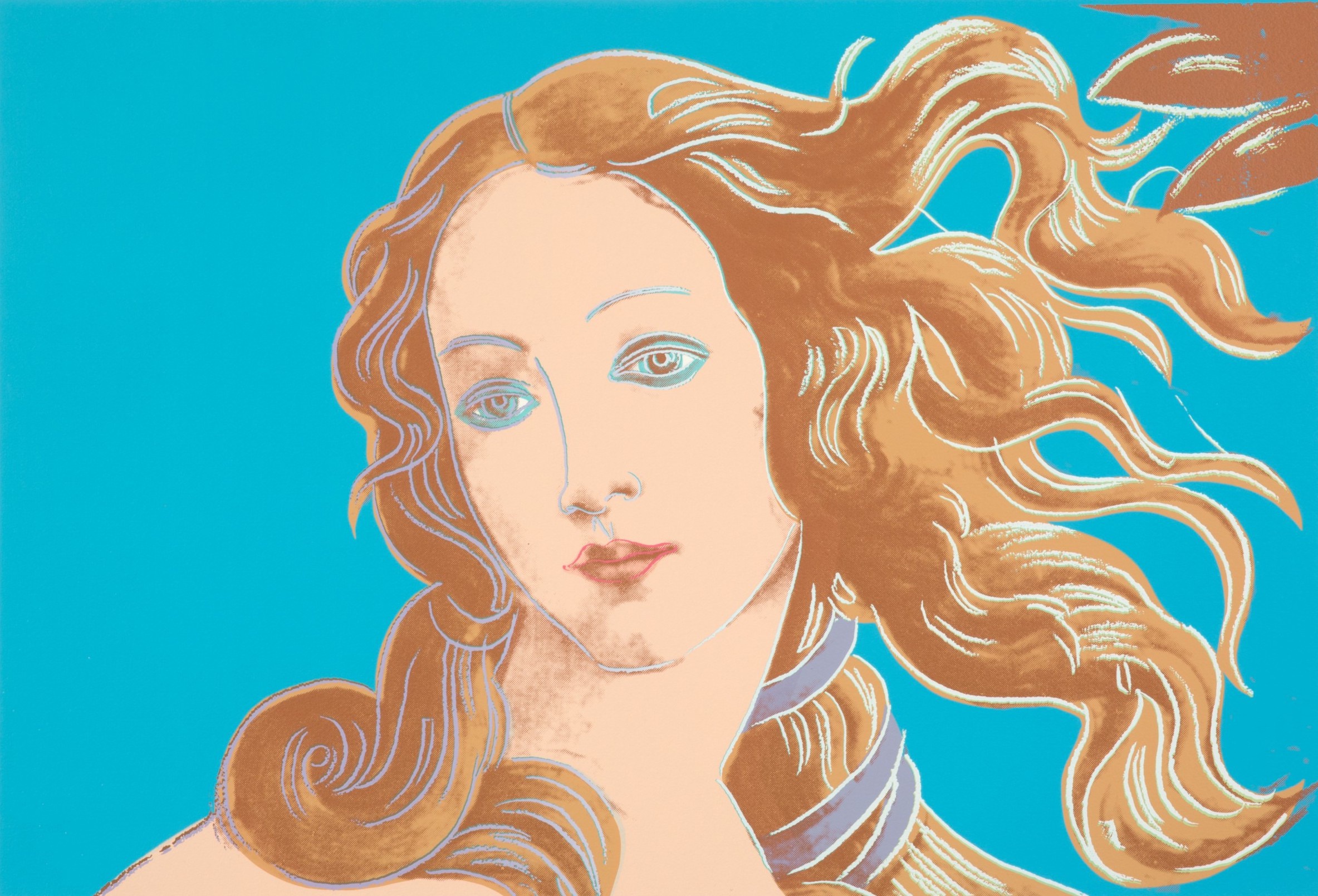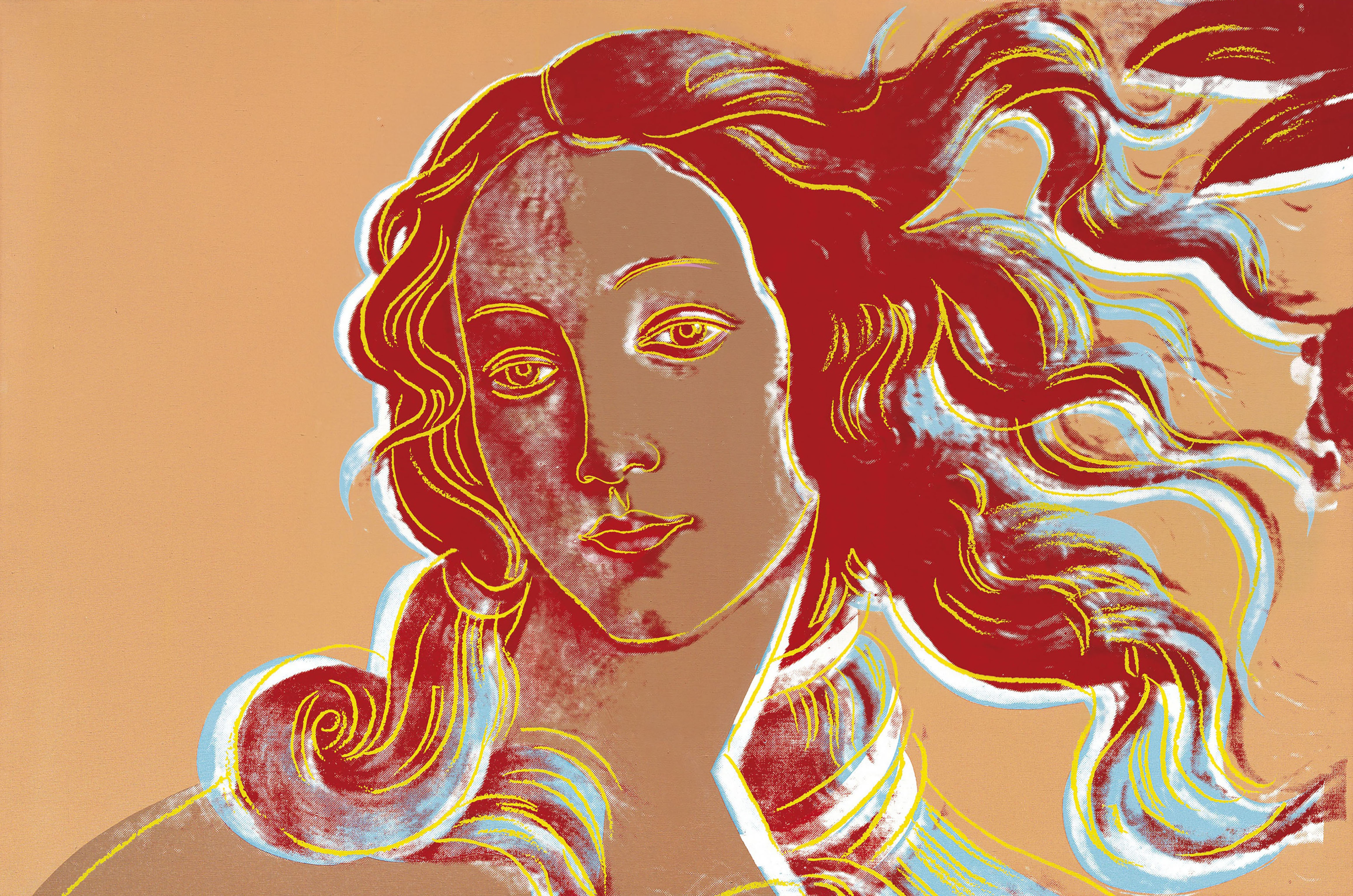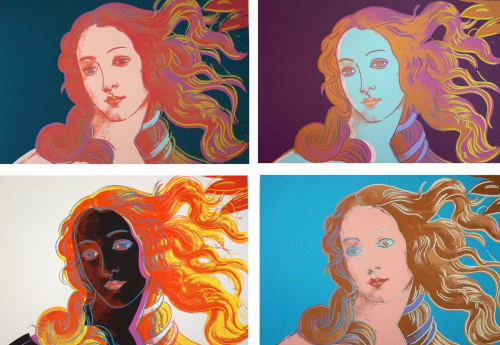Renowned for his revolutionary approach to art, Andy Warhol's legacy transcends mere celebrity portraits and cultural commentary. In 1984, Warhol redirected his gaze towards the timeless masterpieces of classical art, birthing a series that would redefine perceptions of both past and present: The Birth of Venus Portfolio.
Decades earlier, In 1963, amidst the fervor surrounding the exhibition of Leonardo da Vinci’s masterpiece, The Mona Lisa, Warhol became captivated by the portrait's media frenzy. Responding with characteristic wit, Warhol unveiled his own interpretation, Thirty Are Better Than One (1963), playfully repeating the iconic smile of the Mona Lisa thirty times. years later, in the 1980s, Warhol revisited leading figures of art history, meticulously crafting his own Pop renditions of Renaissance luminaries such as Sandro Botticelli, Piero Della Francesca, and Paolo Uccello. Through the reproduction of these iconic works, warhol demonstarated that high art was just as commodifiable as the soup cans and celebrities of our time.
Warhol's interpretation of Sandro Botticelli's Birth of Venus is central to this groundbreaking series. While Botticelli's original masterpiece portrays the goddess Venus amidst a cast of mythological figures, Warhol's rendition takes a captivating departure, zooming in solely on Venus's visage. Through his trademark style of color blocking and bold outlining, Warhol transforms the classical icon into a vibrant, technicolor sensation, stripping away extraneous elements to emphasize Venus's timeless allure.

In Warhol's hands, Venus becomes more than a mere reproduction; she emerges as a symbol of universal beauty, transcending cultural and temporal boundaries. Freed from her original context, she undergoes a metamorphosis to become a fusion of classical elegance and contemporary vibrancy. A testament to Warhol's unparalleled ability to blend high art with popular culture.
Yet, Warhol's reinterpretation of Botticelli's masterpiece extends beyond mere aesthetic innovation. It represents a profound exploration of the power dynamics between tradition and modernity, art and commerce. By reimagining Venus through the lens of mass production and consumerism, Warhol challenges the foundations of art history, subverting conventions while paying homage to the classics.

At its core, Warhol's Birth of Venus serves as a testament to the enduring influence of artistic icons across generations. Through meticulous attention to detail and a keen understanding of cultural resonance, Warhol breathes new life into Botticelli's timeless creation, crafting a masterpiece that stands as a bridge between past and present.
In Warhol's wondrous vision, Botticelli's 15th-century Venus is reborn as a brilliant icon, the divine personification of love, floating in time and space. It's a testament to the timeless power of art to captivate, inspire, and transcend the boundaries of time and tradition. As viewers gaze upon Warhol's reimagined Venus, they are invited to reconsider the nature of beauty, legacy, and the ever-evolving dialogue between past and present.
April 9, 2024







